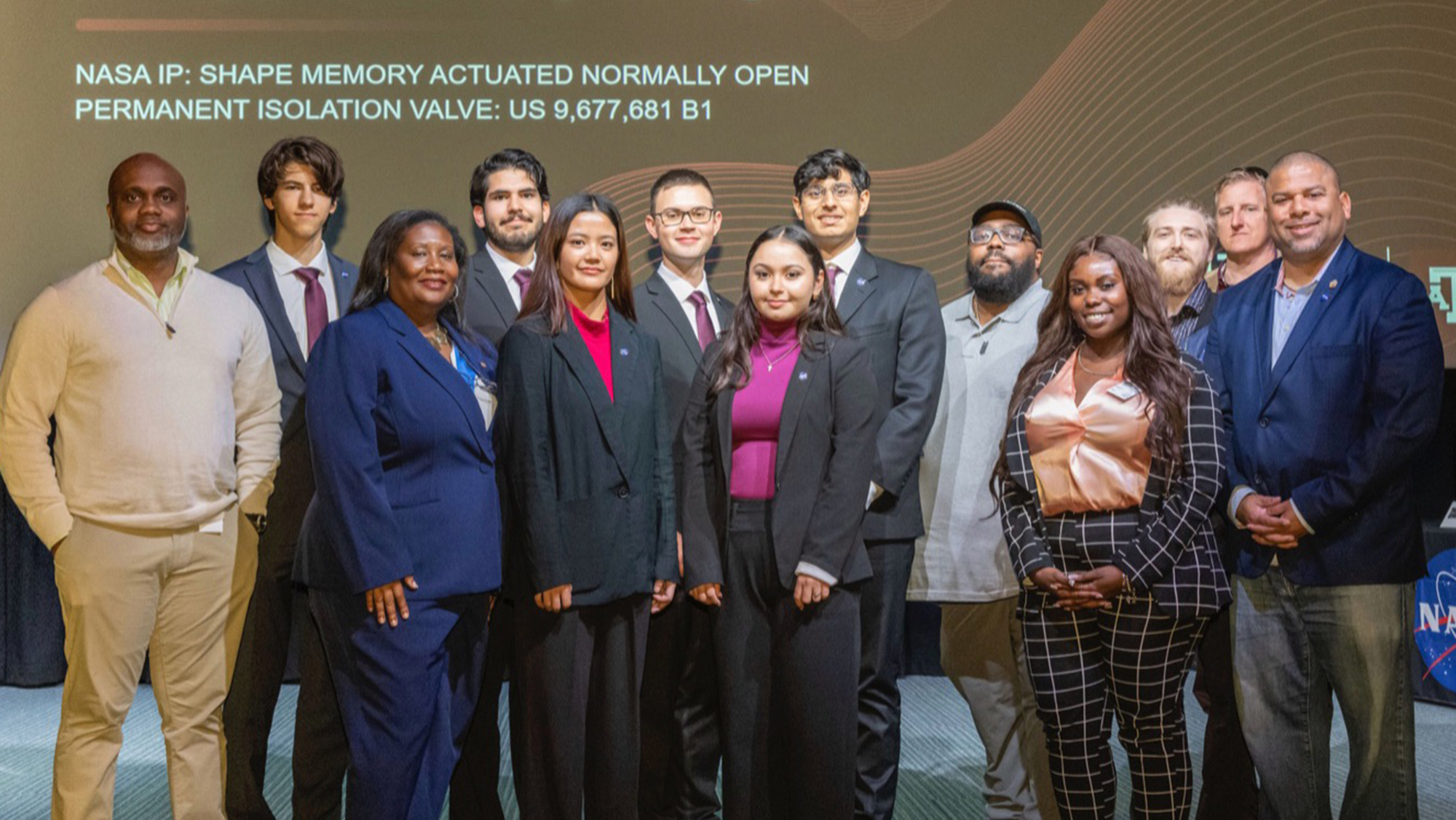
Sprinklers often continue to spray even after a fire has been put out. This can cause flooding and water damage to property, in addition to destruction from the fire itself. To prevent this additional damage, student researchers from Texas A&M University have partnered with the College Station Fire Department to create new sprinkler heads that individually turn off automatically once a fire has been put out.
This innovation was recognized with a first place win at the 2024 NASA Space to Pitch Competition. The competition requires students to form a team, identify a NASA technology with the potential to be applied to a large market, and develop an application and business plan for a potential startup around the chosen technology.
The winning Aggie team behind the new sprinkler technology, known as the SADI Control Systems team (named for their prototype), was inspired by a NASA patent that used technology known as shape memory alloys (SMAs), which change their shape in response to the surrounding temperature. The team used this technology to create an SMA-Actuated Deluge Interrupter (SADI) prototype.
“The SMA-Actuated Deluge Interrupter prototype is inspired by a NASA patent, and we've adapted it for use in optimizing fire sprinkler technology. Our research included familiarizing ourselves with shape memory alloys, rapid prototyping, and market research,” said team lead Jireh Lagman, a first-year engineering student.
NASA Space to Pitch, also referred to as NASA MITTIC, challenges students to apply engineering skills they have learned in their courses to a real-world problem.

“Opportunities such as the NASA MITTIC Competition offer students a wealth of invaluable experiences. This has taught me so much about project management, networking, and facilitating an interdisciplinary approach to the design process,” said Lagman. “I've honed my skills in coordinating tasks, building connections, and integrating diverse perspectives to drive innovative solutions in addition to gaining experience with the engineering design process.”
In the case of the SADI Control Systems team, their research led to a partnership with the College Station Fire Department.
“It was a privilege to work with the students and faculty on the SADI Control System project. This is a great example of the benefits that can come from having a premier university in our hometown,” said Chief Richard Mann of the College Station Fire Department. “The student and faculty's willingness and ability to apply academic theory and engineering to solve public safety challenges has the potential to be transformational to fire suppression systems and provide enormous community benefits from reductions in property loss.”
As part of the Space to Pitch competition, students toured several Johnson Space Center facilities, heard from different speakers, and learned various ways NASA technologies can be brought to market by creative engineers, entrepreneurs, and licensing experts.
The event culminated with a Shark Tank-style pitch competition where the SADI control team presented their work alongside peers from around the country. Since securing first place, the team has been invited to NASA Ames Research Center to meet with executives and tech companies in Silicon Valley, California, about their prototype.
The team worked under the supervision of Dr. Darren Hartl, an associate professor in the Department of Aerospace Engineering. Hartl is an internationally recognized researcher of SMA technology and is currently working on several projects that use it for different applications. “It’s always special to hear about a completely new idea that uses a morphing metal to make a difference. Chief Mann and the students had precisely such an idea,” Hartl said.
The SADI Control System team members:Jireh Lagman, Team Lead
Fernando Trujillo
Joshua Minotti
Gia Garcia
Neel Sharma
Roman Angulo